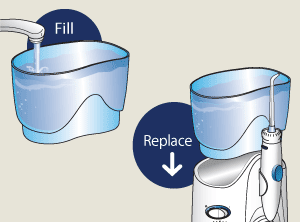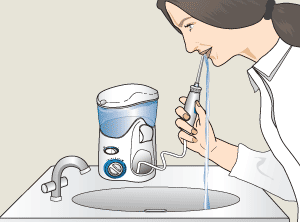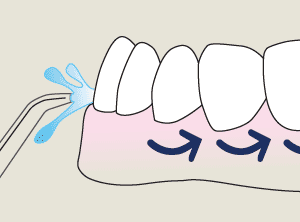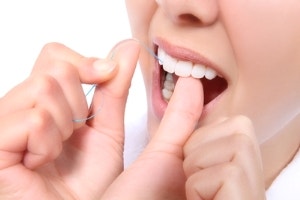How to Water Floss
Flossing is hugely important to your daily oral health routine – it’s one of those small tasks that seems insignificant at the point of doing it, but one that you’ll wish you hadn’t skipped when the problems show up!
Regular flossing helps to keep your oral health pristine – but string flossing can be awkward, messy, and hard to do right. If you are looking for an effective alternative to string floss, you can floss with water instead!
This gives the benefits of exceptional cleans while also being much easier! Here’s how you floss with both a water flosser and thread floss.
How to Floss with a Waterpik® Water Flosser or Dental Floss
How to Use a Waterpik® Water Flosser in 6 Simple Steps


1. Fill the reservoir with warm water and place firmly on the base.
2. Select a tip and click into the handle.
Note: If this is the first use, set the pressure control dial to high. Point the tip into the sink and turn on until water flows. Turn unit off.


3. Start with the lowest pressure setting, lean over the sink, and place the tip in your mouth.
4. Turn the unit on. Close your lips enough to prevent splashing and let water flow from your mouth into the sink.


5. Aim the tip at the gumline.
6. When finished, turn the unit off and use the Tip Eject button to remove the tip.
Depending on the Waterpik® Water Flosser model, you can use the in-handle pause or on/off switch to stop water flow if needed. You can also aim the tip using the rotating base. However, these features are not available on all models.
For more information:
Refer to the product manuals available on our Product Pages
Related article:
How Often Should You Use a Waterpik® Water Flosser?
How to Floss with Dental Floss
Clinical studies show that, when used properly, dental floss can improve oral health. But overly vigorous or incorrect flossing can also result in gum tissue damage.


Follow these instructions from the American Dental Association for properly using dental floss.
- Use about 18 inches of dental floss wound around one of your middle fingers, with the rest wound around the opposite middle finger.
- Hold the dental floss tightly between the thumbs and forefingers and gently insert it between the teeth.
- Curve the dental floss against the side of the tooth in a 'C' shape
- Rub the floss gently up and down, keeping it pressed against the tooth. Don't jerk or snap the floss.
- Repeat on adjacent and subsequent teeth.
- As you move from tooth to tooth unwind the clean floss with one finger and take up the used floss with the opposite finger.
